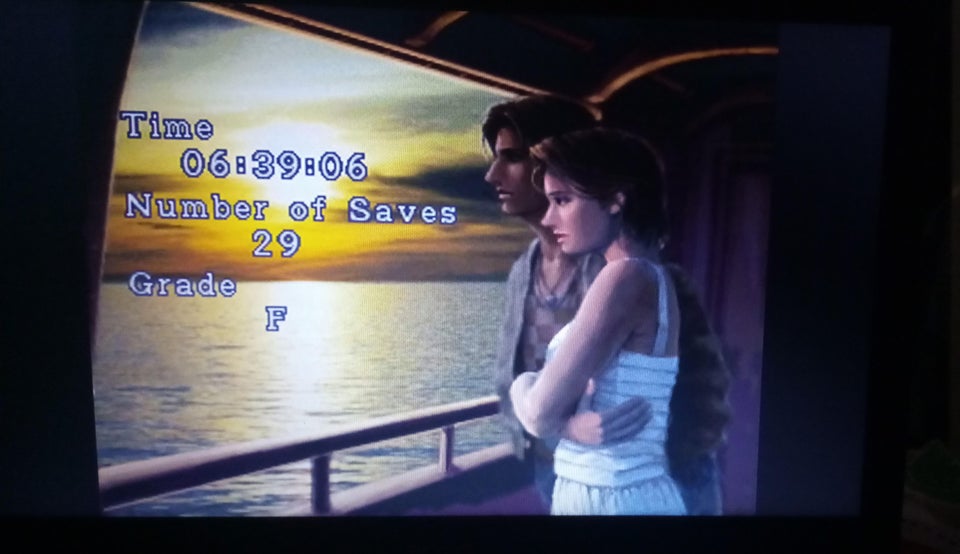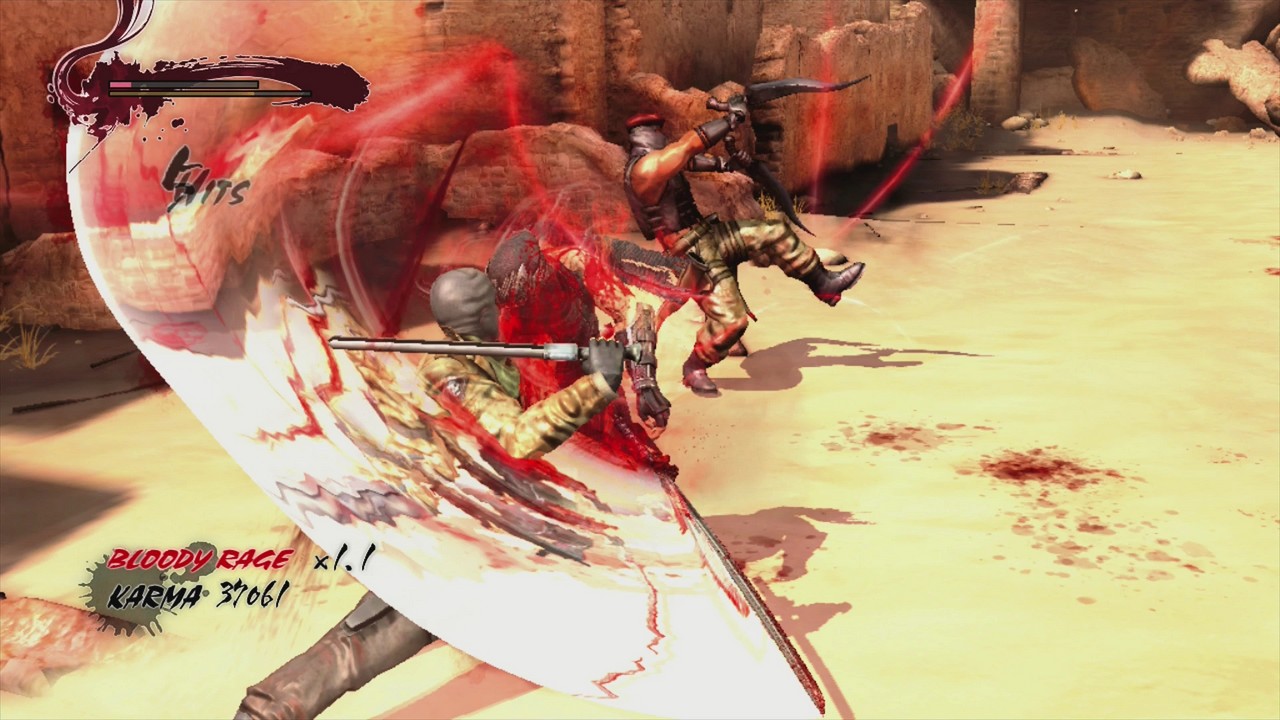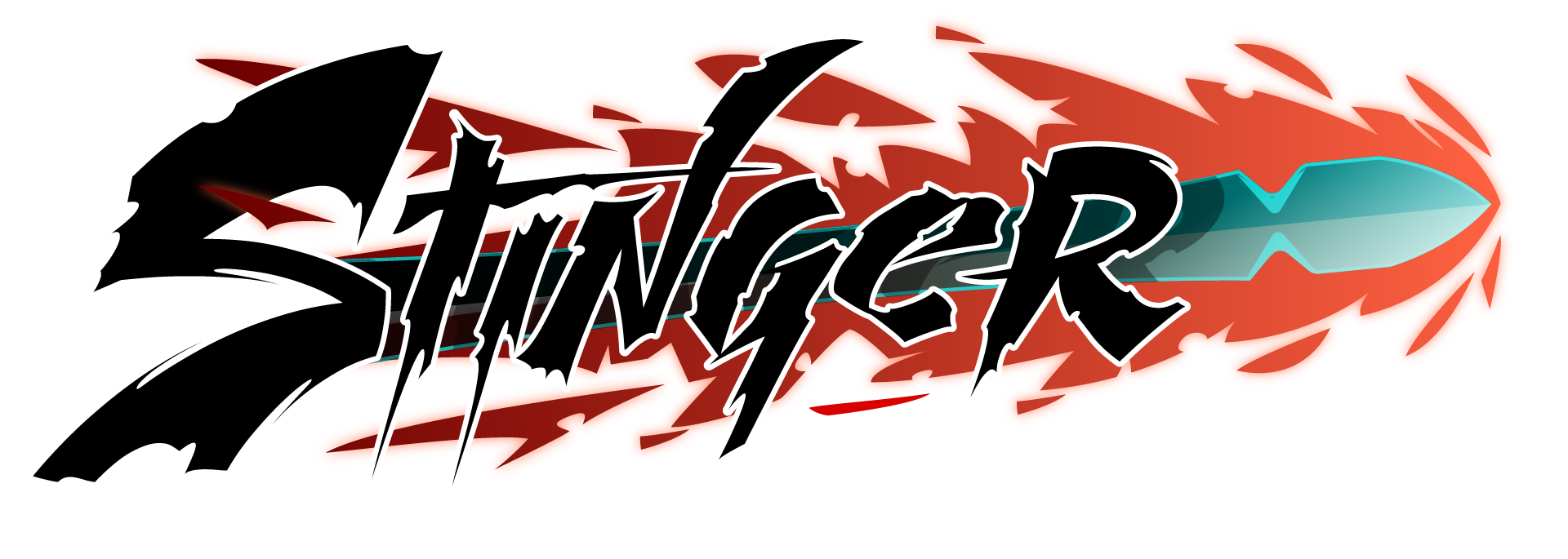With a clear insight into the types of ranking systems, let’s look into some of the finer details. Because getting the S-rank is one thing, but there are other elements to consider as well.
For starters, the clarity of the milestones. In Devil May Cry 3 the goal is clear, but the milestones aren’t. Without an hardcover guide you won’t know, outside of guessing, just how fast you’d have to beat mission 11 for that S-rank or how many orbs you need to collect in mission 8. Should players have this information? One could argue that if a player knows all this data it would lead them to an even stricter path, but the knowledge of the milestone can also improve player motivation as the goal is very clearly set.
And when set, when should the ranking occur? Of the examples used, Resident Evil 3 does it at the end of the game, Devil May Cry 3 at the end of the chapter and Metal Gear Rising at the end of a fight. To answer this we’ll have to take into account what type of players might be enjoying the game and the impact a rank can have on the experience.

One player could simply be enjoying the story, the gameplay or toying around with enemies for fun only to have a D-rank slapped into their face immediately after having a good time, ruining the fun. Or he has just enjoyed a tense first playthrough of Resident Evil, the player is in a state of elation and victory, and then immediately has that taken away by a an F-rank plastered on the screen.
This isn’t just for casual players either. When trying to go for speedruns, challenge runs or just downright styling it can be disheartening for a veteran player to see a 34 minute challenge run of a single fight be greeted by a D-rank:

Devil’s Third tries to circumvent this by hiding ranks and only making them available in its Score Attack mode. Allowing gamers that seek this style of play to enjoy it while those that aren’t interested in it can just enjoy the campaign at their own pace. Another method is seen in Devil May Cry V, in which the only hard rank to obtain is S, showering the player by default in A and B ranks. While this does lessen the value of the higher ranks, it makes it less intrusive to newcomers and keeps them motivated with compliments instead of jabs.
One other element to keep in mind is the abusing of saves, backups and more – also called save-scumming. Metal Gear Rising: Revengeance and most other Platinum Games titles score a player directly after a fight, with a checkpoint both before and after an engagement. Instead of getting a full blast of S-ranks in Metal Gear Rising in one go, an A rank sees a player quickly press “restart from checkpoint”, or load a backed up save. This trial and error mindset slowly decreases the value of an S-rank from a skilled player to simply the one who had the most time on their hands to keep trying until the stars aligned.
Titles that rank at the end of a game, or per mission, don’t promote this as much as players don’t have a clear insight in their performance up until that final ranking outside of a gut feeling.
And say you get all the S-ranks, the question is what you should reward the player with, if anything at all. An in-game reward? A trophy or achievement? Or do you tie them into in-game systems, like how Ninja Gaiden 3: Razor’s Edge directly uses the points gained from the ranking systems to buy new abilities? On the one hand these offer a great incentive for players to do these types of runs when they might not have done so initially. These rewards can also be small, like a new costume or a different coloured lifebar as seen in Ninja Gaiden Sigma 2, or they can be big like a unique weapon or an hidden extra hard stage.

On the other hand, the lure of an reward can also push players that aren’t interested in it at all to still do it i.e. trophyhunters. Enticing a player who just wants to see how long he can juggle a Pride in Devil May Cry 3 on Normal Difficulty to do a full SS-rank on the game’s highest setting could hamper the experience for him, while also seeing more casual players that don’t want a 90% trophy-completion staining their profile crawl to forums in frustration and perhaps – in the gamings modern patch culture – lead to changes in the system based on their vocal minority, while they weren’t even the target audience for this challenge.
Lastly, cheat items. While rarely appearing in modern gaming thanks to DLC culture, numerous games still offer items that give the player super powers. How should these influence ranking? Devil May Cry always saw these negatively impact your rank when used, while Metal Gear Rising: Revengeance simply allowed them – creating a clear gap between ‘Wigged S-ranks’ and ‘Non-Wigged S-ranks’ as the community called them. Allowing these could offer a solution to the trophyhunter problem – giving them an easy way out – but at the same time also greatly decreases the value of the highest rank.
Conclusion
It has been a long article with a lot of variables, information and examples. Now it can be tempting to end with a paragraph grabbing all that knowledge to describe what makes for the perfect ranking system. Yet, as with most things in life, there is no clear best option. There is no perfect ranking system, there are only perfect ranking systems; each with their own goal and target audience.
Instead, let’s filter all the information until now into a list of things to keep in mind and strive towards when designing a ranking system:
- Ranking systems should base themselves on something that matters in the immediate gameplay. For example Devil May Cry should score on style, and not on Orb count which plays a minor role in the gameplay itself;
- When designing a ranking system, keep in mind if you want to offer a Strict, Versatile or Open system and if it fits your combat system;
- A Strict system is best suited for games that have one envisioned playstyle, leaving little room for creativity, and have no place in a game with a more open ended combat system;
- Versatile systems are best suited for titles with an open ended combat system and want the ranking system to reflect this and allow for numerous playstyles;
- An Open system fits perfectly for a hardcore crowd that needs no motivation in terms of a leter, they just need the raw data. At the same time these also allow more casual players to still enjoy them;
- Choose carefully when you want to rank your players. If you don’t mind players constantly retrying for that perfect attempt, then per fight is fantastic. But if you don’t want to ruin immersion then perhaps a rank at the end – like in Resident Evil – is best. Or just put it in a different mode all together or allow it to be switched off in the menu;
- Instead of the ranks going from D-C-B-A-S, you can try B-A-S-SS-SSS for example. They have the same meaning but are less demotivating to newer players;
- Try to keep the value of ranks high, and not have them be devalued by something like a cheat costume;
- Clearly communicate that the highest rank isn’t the standard, but an exception. You only want players that want to improve and earn these ranks through hard work to get them. You don’t want players that don’t care about the system to aim for them.
And that’s it. Ranks are a curious subject, with many mathematical but also motivational hookins with a lot of layers to them.
You want players to enjoy your game and as a player you want to enjoy playing. If you get a kick out of aiming for the highest rank, it should be there for you to fight towards. If you just want to play for something else, a game should not punish you for doing that. Here’s hoping ranking systems in the future will play more to a game’s strengths and that of the playerbase than creating an arbitrary goalpost.
鑒 reflection style 鑒
In this short section I reflect on the article from my own viewpoints as a gamer and lover of the genre instead of a critic.
I’ve never been a fan of ranking systems in games. I tend to be a player that takes his time with games, toying around and experimenting or going for challenge runs. Despite being considered one of the, if not the, best Metal Gear Rising players around, I’ve seen more C ranks in that game than S due to how I play games. Yet as such, I felt it interesting to analyze why this was as such for me and why I didn’t like S-rank runs. But also why, when I look online, I like to watch more creative runs than those held back by the deadline of an S-rank.
Like with my article on Weapon Switching, I was surprised by how many games actually use the wrong system and how they feel like an afterthought. Devil May Cry’s ranking system goes nearly totally towards an efficient play route, which lays completely opposite of its intended playstyle. Meanwhile Ninja Gaiden’s ranking system promotes heavy Ultimate Technique use – effectively punishing high level players that play without that hand holding ability.
There’s a lot to unwrap, too much even, for one article. At the time of writing, this article is nearly sixteen pages long, though I’m sure subsequent edits will narrow it down, but there’s just too many examples to give, too many details to note or influences to nail down. I just hope it came over correctly and it makes way for some nice discussion or helps one lone designer into figuring out his ranking system. If you, dear reader, got this far into the article, I applaud you and thank you for your patience. Next drink is on me!
斬 postscript notes 斬
- Special thanks to Forum user Gregorino for his insights and help with the Urban Reign ranking system. I always try to implement a lesser known game into my examples and this was an excellent fit!
- Used Icomoon to make a custom S-rank font to use in the tables, based off of the design from Devil May Cry V. Fun to do!
- The names used in the examples are gamertags of some of my friends, thought it was about time to include them!
- I always loved how Vanquish didn’t include a trophy or achievement for beating God Hard difficulty. Most players as a result didn’t touch it initially, which was good, as the mode was very hard and made more for people that sought to challenge themselves than fill up an achievement-bar;
- The “there is no perfect ranking system, only perfect ranking systems” sentence near the end of the article is based on Howard Moskowitz’s motto that there is no perfect Pepsi, only perfect Pepsis. Meaning that there isn’t a “one size fits all”;
- Bayonetta 2 tried to circumvent its save-scumming by removing the ‘restart from checkpoint’ option, which instead just resulted in players rebooting the game to reload the previous checkpoint which just took even longer. Not a good fit;
- While I note S-rank being the highest attainable rank in Resident Evil 3, this is actually different per region. The Eastern version ranks players from E to S, while the Western ranks from F to A. While the values are the same, it is probably just a different letter-base considering the grading systems in schools being different between Japan and the US;
- There’s an hilarious theory that the origin of the S-rank lies in a 1972 ticket to a Led Zeppelin concert which was the first to note S-ranked seats. While this did in fact occur, and it was the first to use this notation instead of 1st Grade seats, this wasn’t the origin of the S-rank at all;
- The S-rank is basically Japan’s answer to the A+ used in American grading systems. The grade stands for shū (秀) which is the Japanese word for “Exemplary, excellent”. While not used in the GPA until the mid-90s, it was already used in post-secondary schooling for some time before;
- The first game to use S-rank as a grade for player performance was King of Fighters ‘94. Meanwhile Yu yu hakashano from 1990 had S-class demons in it. 1995 saw「リアルバウト餓狼伝説」REAL BOUT FATAL FURY from SNK first use “S”, “SS” and “SSS” ranks in conjunction.
- I always found it fun that Devil May Cry 3 gave you a little hint at the end of the mission on how you performed. As the mission ended Dante would shoot at the screen. The amount of bullet holes he made were actually linked to your rank, a nice touch;
- In Resident Evil 3, using a FIrst Aid Spray, the game’s best healing item, is considered ‘cheating’ and will immediately cap your rank at B. For reference a single green herb heals 25% health;
- I really wanted to involve the title system from recent Metal Gear games such as Sons of Liberty and Guns of the Patriots since they are such a unique solution, but in the end decided against it as it really over-complicated the article, didn’t add too much to the discussion and it was getting too long as it is;
源 sources 源
http://www.indiana.edu/~educy520/sec6342/week_07/durm93.pdf
http://file.scirp.org/Html/3-1250124_73535.htm
Japan. A Study of the Educational System of Japan and a Guide to the Academic Placement of Students in Educational Institutions in the United States. World Education Series. (Mashiko, Ellen E.)
https://www.reddit.com/r/residentevil/comments/c6cuz4/beat_re3_for_the_first_time_and_i_did_every/ https://www.youtube.com/watch?v=Eg_kvikkKCE


Fantastic article. Thanks!
Am I the only person who gets excited when I get to the end of a new game, only to be hit with an F rank? The thing is, I would be incredibly disappointed if I got to the end of a game that I’m playing for the first time, only to find that I have the highest rank in the game. THAT’s demotivating, to me. You shouldn’t be a master at a game as soon as your hands land on the controller, because where do you go from there? It’s not an insult to get bad ranks on your first try. Nobody complains when they go over par when playing Golf for the first time, so why is this entitled attitude OK in video games? Why isn’t it shunned more? Because the way I see it, it should be. It’s ugly, and it’s counter to what games are all about. Your idea of using ranks B, A, S, SS, SSS rather than E, D, C, B, A, S is a fantastic compromise, though. Again, thanks for this article, I enjoyed it a ton! 🙂
Cheers Swinny, happy to know you enjoyed the article so much!
Yeah, the whole ranking thing at the end also plays into the type of person. One sees an F-rank as a challenge to improve, the other as a demotivator after a hard day at the office. Think it just depends on the person, same with what target-audience a game has. Personally I think that making ranking systems optional would go a long way. Really wish this element would get a bigger focus in gamedesign, really feels that in most games they are slapped on without much thought.
What ranking system do you personally like the most :)?
I suppose I like the ranking system in Bayonetta 1 the most, mainly because the Pure Platinum rank rewards you for playing perfectly. I personally refuse to abuse the checkpoint system, so it’s not like I’m actually good enough at the game to PP most missions, haha. I just like having that goal, even if I can’t achieve it. It is motivation for me. Also, in Bayo, once you have finished a mission, it’ll ask you if you want to overwrite your old score with your new score, right? Each time I play through the game, I overwrite my old ranks with my new ranks, no matter how good or bad they are, so that at the end of a playthrough I can look back on all missions and see how well I actually did. I really enjoy this aspect of Bayonetta and I’m pretty sure that most other games don’t allow you to overwrite your old scores like this. It sounds like such a small thing, but I see enormous value in it. I also enjoy how I feel like I actually earned each rank in Bayonetta. This is a big deal, because in DMC V, I really don’t think that I earned 70-90% of my S Ranks on my first playthrough, so it just came across as cheap praise. I like to feel like I’ve earned it, otherwise there’s no point, to me.
You’re doing us all a service with this website. Thank you!!!
I think that’s a really mature mindset Swinny, seriously. There are a lot of players out there that wouldn’t play as honorable as you, so you should be commended for it I feel! Bayonetta without checkpoint abuse can be grueling to get a high rank on, even the best of the best would struggle.
Think that notion of overwriting is something worth mentioning perhaps, never actually gave it much thought as most – if not all – games by default overwrite your score with whichever score is highest.
Really appreciate the kind words at the end by the way, seriously. Means a lot that people enjoy this site so much! Spread the word I’d say!